Search
07218 The Use of a Lean Duplex Stainless Steel, UNS S32101, for Thermal Dimple Jackets on Vessels for High Purity Applications
Also Purchased
07198 Stainless Steel Pitting in Chloride-Sulfate Solutions - The Role of Cations
Product Number:
51300-07198-SG
ISBN:
07198 2007 CP
Publication Date:
2007
$20.00
07210 Long Term Degradation of 0.5Cr-0.5Mo Plate Material in a Black Liquor Incineration Unit
Product Number:
51300-07210-SG
ISBN:
07210 2007 CP
Publication Date:
2007
$20.00
07202 An Explanation of Corrosion Acceptance Tests and Their Applicability to Field Use
Product Number:
51300-07202-SG
ISBN:
07202 2007 CP
Publication Date:
2007
$20.00




